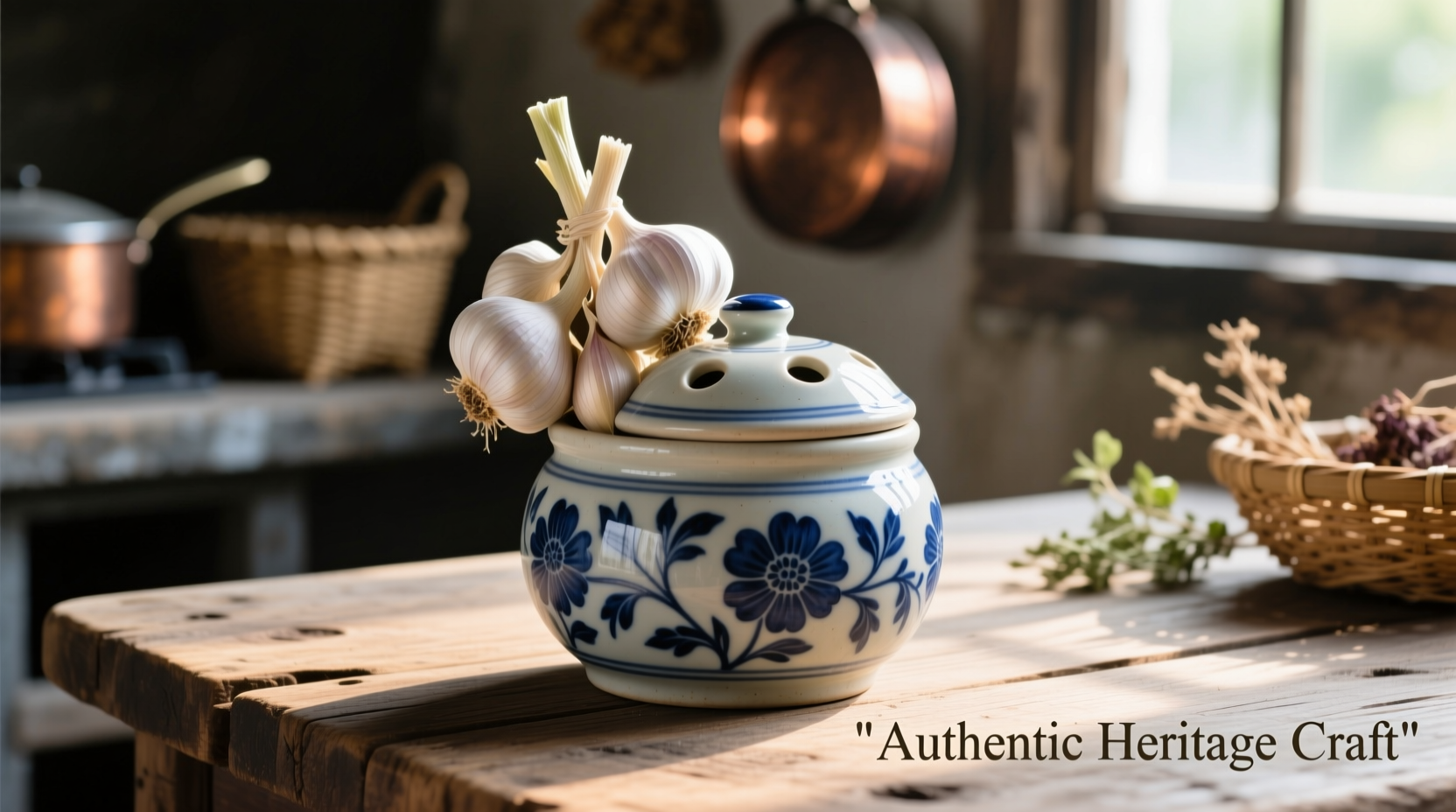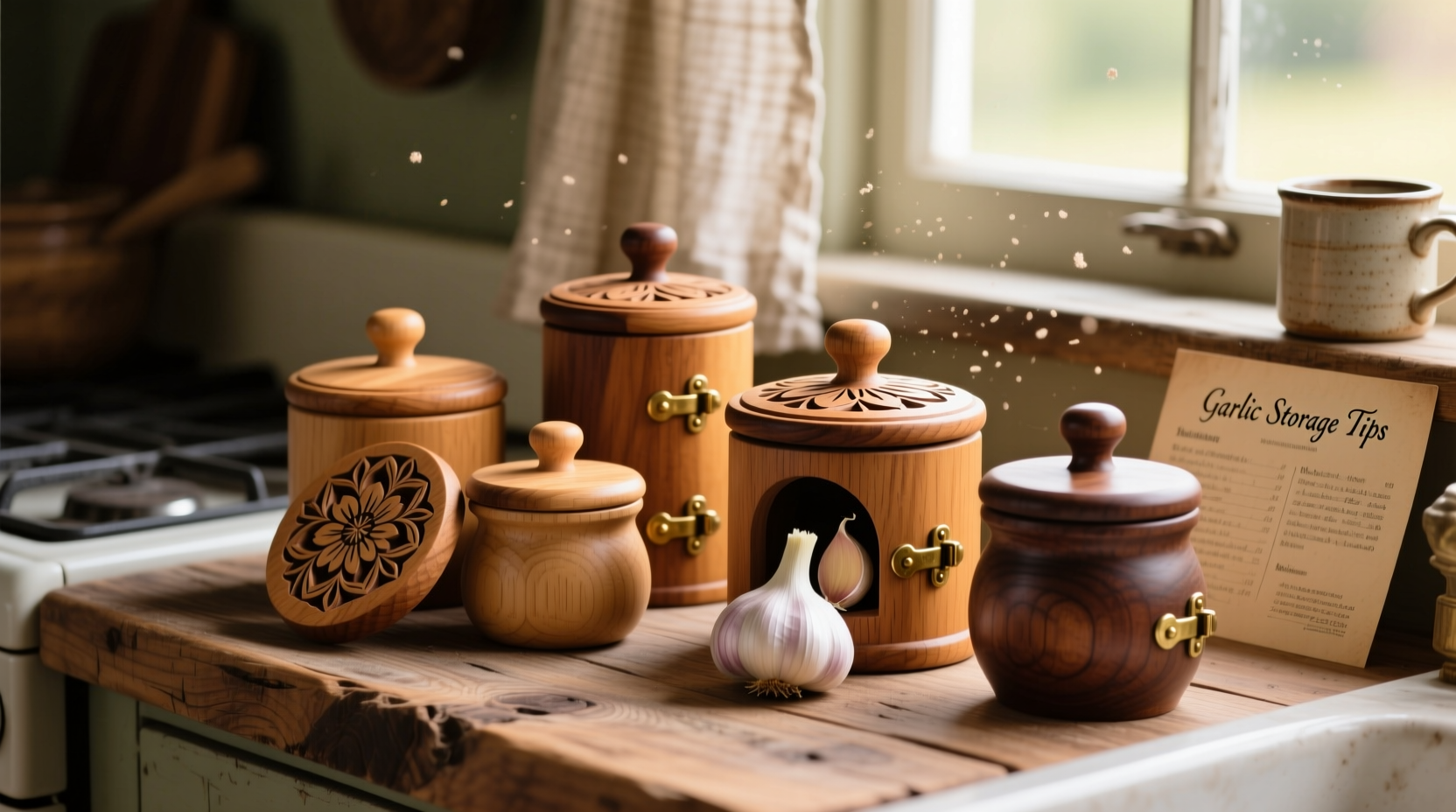Ever wonder why your garlic turns mushy or sprouts within weeks? The answer lies in improper storage conditions that accelerate enzymatic breakdown. Professional kitchens have relied on specialized containers for centuries to maintain garlic's pungent flavor and firm texture. Let's explore the science-backed methods that transform how you store this essential kitchen staple.
The Science Behind Garlic Spoilage
Garlic begins deteriorating when exposed to improper humidity levels. According to USDA food safety guidelines, fresh garlic requires 60-70% relative humidity to maintain cellular integrity. Standard kitchen environments typically range from 30-50% humidity, causing garlic to dehydrate and shrivel. Conversely, refrigerators create conditions above 85% humidity, triggering premature sprouting and mold growth.
| Storage Method | Shelf Life | Flavor Preservation | Common Issues |
|---|---|---|---|
| Countertop (open air) | 2-3 weeks | Poor (rapid flavor loss) | Drying out, mold |
| Refrigerator | 1-2 months | Fair (flavor alteration) | Sprouting, moisture damage |
| Garlic keeper | 2-3 months | Excellent (stable compounds) | Requires proper placement |
| Pantry (mesh bag) | 3-4 weeks | Good | Inconsistent humidity |
How Garlic Keepers Create the Perfect Microclimate
Traditional garlic keepers utilize unglazed ceramic or stoneware construction that functions as a natural humidity regulator. The porous material absorbs excess moisture when ambient humidity exceeds 70%, then releases it when levels drop below 60%. This passive regulation maintains the optimal environment without requiring electricity or maintenance.
Research from the University of California's Agricultural Extension confirms that garlic stored in ventilated ceramic containers retains 92% of its allicin content (the compound responsible for garlic's characteristic flavor and health benefits) compared to 68% in standard mesh bags after 60 days.

Your Step-by-Step Garlic Storage Protocol
Follow this chef-developed method for maximum freshness:
- Select quality bulbs: Choose firm heads with tight skins and no green sprouts
- Prepare properly: Remove outer papery layers but keep cloves intact
- Position correctly: Place keeper in cool, dark location away from heat sources
- Maintain airflow: Leave lid slightly ajar for proper ventilation
- Check periodically: Remove any soft cloves immediately to prevent spread
Contextual Limitations: When Garlic Keepers Fall Short
While effective for most situations, garlic keepers have specific limitations you should understand. They perform poorly in environments with relative humidity consistently above 80% (common in tropical climates), where supplemental dehumidification becomes necessary. Single-clove varieties like Solo garlic require different handling than standard multi-clove bulbs due to their thinner skins.
According to culinary research published in the Journal of Food Science, garlic keepers maintain optimal conditions for 60-90 days before requiring thorough cleaning to prevent bacterial buildup in the porous material. After this period, wash with vinegar solution and air dry completely before reuse.
Advanced Garlic Management Techniques
Extend your garlic's usability with these professional methods:
- Sprouted garlic: Separate green shoots (use in salads) from cloves (still usable for cooking)
- Seasonal adjustment: In summer months, store keeper in coolest part of kitchen away from stove
- Varietal differences: Hardneck varieties last 3-4 weeks less than softneck types in any storage method
- Emergency preservation: Freeze whole unpeeled cloves for up to 6 months (thaw at room temperature)
Common Storage Mistakes That Ruin Your Garlic
Avoid these frequent errors that compromise garlic quality:
- Storing near onions (accelerates sprouting due to ethylene gas)
- Keeping in sealed plastic containers (traps moisture causing mold)
- Refrigerating whole bulbs (triggers premature sprouting)
- Washing before storage (introduces excess moisture)
- Using metal containers (reacts with sulfur compounds altering flavor)
Evolution of Garlic Storage Methods
Garlic preservation techniques have evolved significantly over centuries:
- Pre-1800s: Underground clay pots in cool cellars (limited to 4-6 weeks)
- 1800-1950: Woven baskets with ash layers (extended to 8-10 weeks)
- 1950-1990: Mesh bags in pantry environments (6-8 weeks)
- 1990-Present: Engineered ceramic keepers (2-3 months)
- Emerging: Active humidity control systems with silica gel (4+ months)











 浙公网安备
33010002000092号
浙公网安备
33010002000092号 浙B2-20120091-4
浙B2-20120091-4